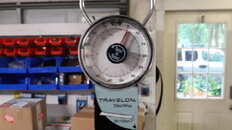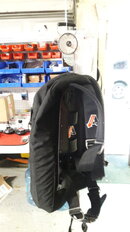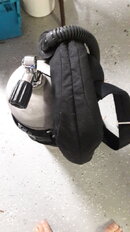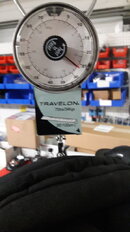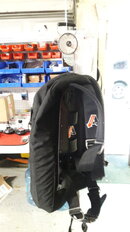Didn't think it would work but I tried.
You are using an out of date browser. It may not display this or other websites correctly.
You should upgrade or use an alternative browser.
You should upgrade or use an alternative browser.
VDH BP/W package review
- Thread starter tbone1004
- Start date
Please register or login
Welcome to ScubaBoard, the world's largest scuba diving community. Registration is not required to read the forums, but we encourage you to join. Joining has its benefits and enables you to participate in the discussions.
Benefits of registering include
- Ability to post and comment on topics and discussions.
- A Free photo gallery to share your dive photos with the world.
- You can make this box go away
Tobin,Humm, Let's review:
1) You've claimed I "slapped" you yet can provide no examples of such.
2) Are now engaging in name calling.
Wow.
Tobin
I am certain you know but just a polite reminder. This is the VDH forum and here, just as in your own forum, Bryan is King and his preferences/requests should be respected, especially from another manufacturer.
While I don’t GAF of actual capacity my impromptu testing of the VDH 18 is closer to 20, either way it performing great on the freedom plate here in Truk Lagoon with more than enough lift. I am considering the 35 for home cold water use where I dive the long DSS / weight plates added with a Dive Rite 35.
Tbone, try the din on your Kraken with an adaptor to yoke and it will put the can on your back with a standard doubles type plate, dove it in Monterey just before this warm water trip.
Tbone, try the din on your Kraken with an adaptor to yoke and it will put the can on your back with a standard doubles type plate, dove it in Monterey just before this warm water trip.
cool_hardware52
Contributor
Didn't think it would work but I tried.
What? A few posts ago you were encouraging more responses claiming you enjoyed the free adverts.
Has that changed?
Now try to imagine that 4-5 pages ago when a *customer* expressed concerns about claimed capacity you'd simply replied "Interesting, I'll check that out" (or similar)
I'll venture a guess you could have avoided calling me vulgar names without cause.........
A bit of history: When I got in this business I did some research. In part to try and discover how manufacturers decided what wing capacities were necessary, and in part to discover who these capacities were measured.
The first issue left me dumbstruck. No one, I mean NO one including the heads of tech training agencies could provide me with a quantitative means of determining required capacity. All I could find was empirically derived answers, "With heavy dual l104's you need at least XX lbs of lift" That lead me to develop my own process.
As to the second issue, rated capacity and how it was measured, I discovered that most of the sample wings I could get my hands on offered their rated capacity only when inflated in the free state, i.e. not mounted to a plate with a cylinder or cylinders attached. When assembled into a rig the available capacity was often 4-5-6- lbs less. I visited a local fabricator and asked how they determine capacity. They showed me a jacket BC being filled with water in the parking lot. They proudly told me they did the same for all of their bcs. I asked it they had any back plates or cylinders on hand. They looked at me funny, nope not one, no idea why that might matter. I wasn't sure they knew what a back plate was. Keep in mind that wings remain a tiny percentage of scuba inflatables, the typical contract cut and sew shop would die if they only made wings.
The scuba industry is one where most brands (marketing companies) make almost nothing in house. Nothing wrong with that. It can be wise to seek vendors with specific expertise, and spread the risk of capital investment in tools and equipment. This model works fine if the "general contractor" understands the final product and specifies (and verifies) exactly what each spoke in the manufacturing wheel needs to. Often the marketing company assumes the vendors have greater expertise than they really do, and the vendor assumes the marketing company just needs a variation on their basic product and the result a gap in the specifications.
There was a major brand that ~8-9 years ago decided to get into the back plate and wing business. Their first back plates had camband slots, but none of their singles wings had any camband slots at all, (oddly all of their doubles wings had slots) and their product line did not include a single tank adapter. The net result was if you wanted a Brand X singles rig you needed to buy a 3rd party STA to make it all work! How does this happen? Simple, the buyer sent a backplate to a metal fabricator and asked them to alter / duplicate it. The buyer sent a single wing to a cut and sew shop with the same instructions. Both shops did their job in isolation, with no idea how the final assembly was supposed to fit together. The buyer at brand X assumed the two vendors were experts after all......
This is the type of thing I was trying to help you avoid. I now know better than to offer you any help ever...
Good luck,
Tobin
Ok.....I'm sure my results will be called suspect since I'm the one who sells it but here goes. This is how I remember how to test them. Just take a look at the pictures. This is my wife's rig. #18 wing, standard aluminum DIR style plate and harness. All right off the shelf stuff I sell. Weights right at 5lbs. I then put the wing/plate/harness etc on an 80cf aluminum cylinder and filled the wing with a flush hose thought the inflator till the OPV was venting. Pictures are of wing mounted on cylinder full of water and you can see it has expanded about as far as it can. Took it off the cylinder and hung it back up on the scale and it's about 26lbs.....So if i figure it correctly 26lbs - 5lbs =21lbs. So I guess I sold everyone wings with a lift of #21 not actually #18...then again that was with it filled to the point the OPV was leaking.
NOTE....I don't have a #35 here to test....I don't have any need for one so there are none in service here in FLA.When they arrive in a couple of weeks I will ask a customer if I can test their wing and post the results. What I won't do is take a new wing, fill it with water for testing then send it on to a customer telling them it's brand new. Of course I'll make it worth their while to let me get it wet.
NOTE....I don't have a #35 here to test....I don't have any need for one so there are none in service here in FLA.When they arrive in a couple of weeks I will ask a customer if I can test their wing and post the results. What I won't do is take a new wing, fill it with water for testing then send it on to a customer telling them it's brand new. Of course I'll make it worth their while to let me get it wet.
Attachments
Last edited:
I now know better than to offer you any help ever...
Tobin
Promise?
You are just about on the money....Since I was not going to get any peace till I did it I just measured and mine came out around 22lbs. Which is good since I'd rather it be a little more lift than advertised than a little less than.While I don’t GAF of actual capacity my impromptu testing of the VDH 18 is closer to 20, either way it performing great on the freedom plate here in Truk Lagoon with more than enough lift. I am considering the 35 for home cold water use where I dive the long DSS / weight plates added with a Dive Rite 35.
Tbone, try the din on your Kraken with an adaptor to yoke and it will put the can on your back with a standard doubles type plate, dove it in Monterey just before this warm water trip.
BTW, while you are in Truk would you look for some small round saucers and cups I left on the bottom when I was there last. I'd appreciate if you would return them to me if you find them.
I want a refund... 
But seriously, great wing, great price, great service.

But seriously, great wing, great price, great service.
Just take out the bladder and cut an inch off each side and glue it shut. Should be right at #18 then...I want a refund...
But seriously, great wing, great price, great service.
cool_hardware52
Contributor
Just take out the bladder and cut an inch off each side and glue it shut. Should be right at #18 then...
Might be closer to 18 with an 8 inch cylinder. If you want to reduce capacity I'd suggest making the shell, not the bladder smaller.
Tobin
Similar threads
- Replies
- 2
- Views
- 371
- Replies
- 5
- Views
- 326
- Replies
- 0
- Views
- 550
- Replies
- 8
- Views
- 931



